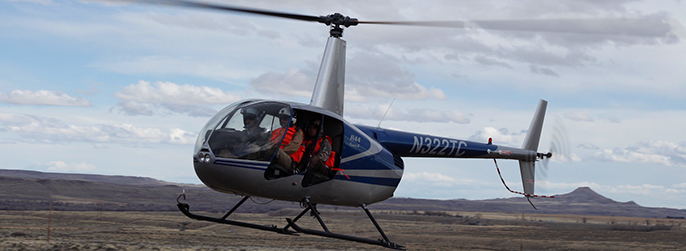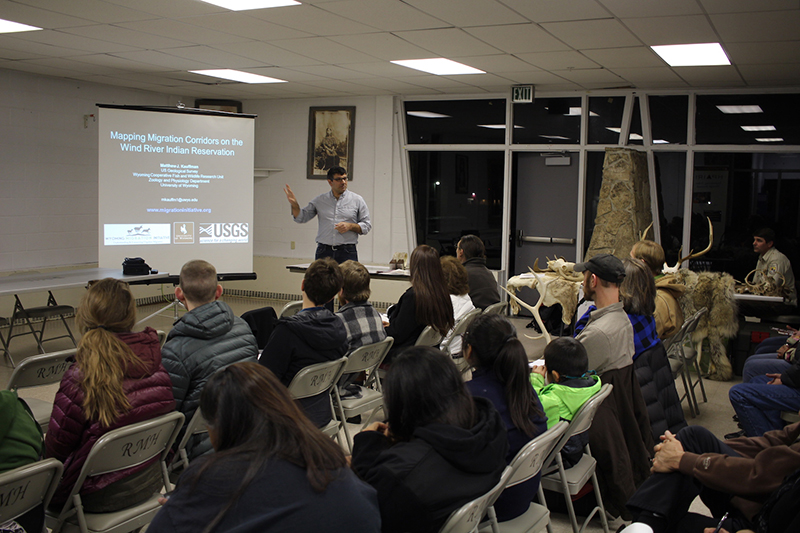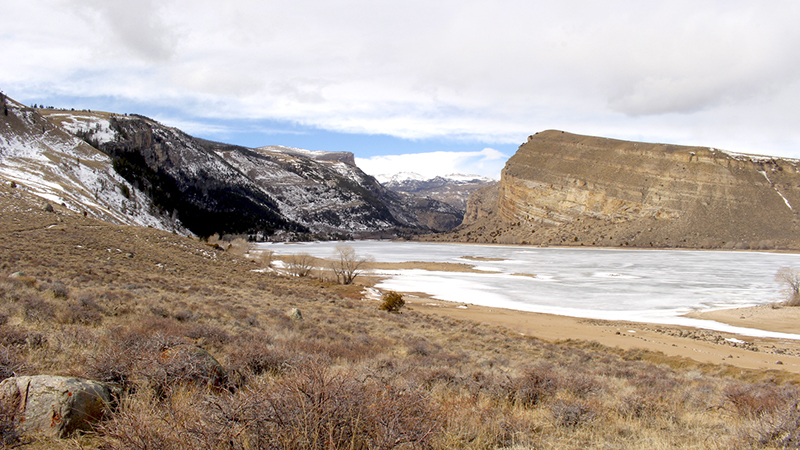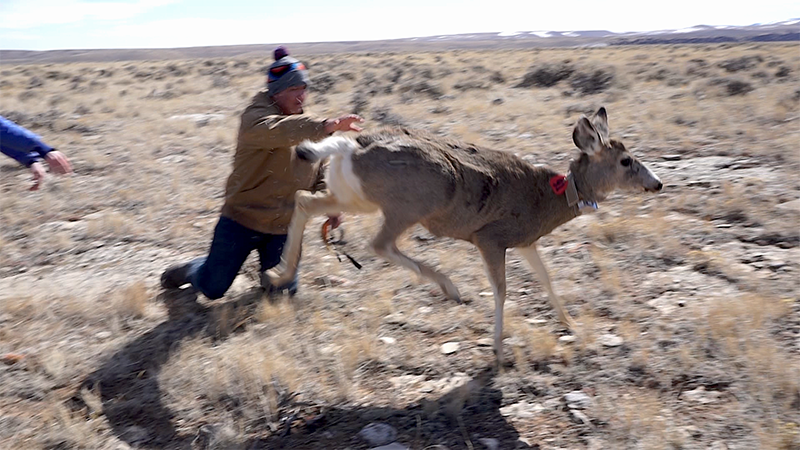Wind River Indian Reservation Mule Deer and Elk Migration Project

Project Overview
The Eastern Shoshone and Northern Arapaho Tribes have sovereignty over wildlife on the Wind River Indian Reservation. This vast and intact 2.2 million-acre area provides winter range for at least 10,000 elk and approximately 5,000 deer on the Owl Creek Mountains and the Wind River Range. Large groups of elk (1,000+) have been routinely observed moving onto tribal lands in early winter, and migrating to lands managed by the Wyoming Game and Fish Department in the summer and fall.
Managers and cartographers have historically depicted the Wind River Indian Reservation as being outside of the Greater Yellowstone Ecosystem due to jurisdictional issues, despite the fact that migrations connect the reservation directly to the GYE. Through these trans-boundary migrations, elk and mule deer provide recreational, cultural and subsistence values to thousands of enrolled Eastern Shoshone and Northern Arapaho residents of the Wind River Indian Reservation. The Wind River Indian Reservation also provides crucial winter range for elk that are hunted on federal public lands during the fall.
Despite these benefits, biologists do not know the location of migration corridors or stopover areas used by elk or mule deer. Understanding the location and use of these areas is critical to conserving and managing these herds for future generations. Further, researches have a limited understanding of the demography of this herd (adult survival, pregnancy rates), and how diseases such as brucellosis could be influencing population growth. The Wind River Indian Reservation migration project seeks to fill these knowledge gaps to better manage these important herd into the future. Initial findings show that one mule deer that winters in the Owl Creek Mountains summers 100 miles west in the Gros Ventre Mountains and firmly within the Greater Yellowstone Ecosystem.
The project is being conducted by the Eastern Shoshone and Northern Arapaho Fish and Game, with the U.S. Fish and Wildlife Research Service office in Lander, technical assistance and mapping analysis from the Wyoming Migration Initiative, and funding from the Nature Conservancy of Wyoming, Bureau of Indian Affairs, Tribal Wildlife Program, US Fish and Wildlife Service, Rocky Mountain Elk Foundation, Knobloch Family Foundation, and US Geological Survey.
Together with the University of Wyoming High Plains American Indian Research Institute, these groups held outreach meetings in the reservation communities of Fort Washakie and Ethete in 2018 and 2019 to brief tribal members on the research project. The meetings opened with blessings from tribal elders, and concluded with a shared meal. The meetings have helped to build relationships and understanding of the value of this research for tribal members, as part of a new community-focused outreach model for University of Wyoming-based migration researchers. Further, students from Fort Washakie School and Wyoming Indian High School helped with mule deer data collection in March 2019, helping to connect the next generation of tribal members with wildlife research and management.





